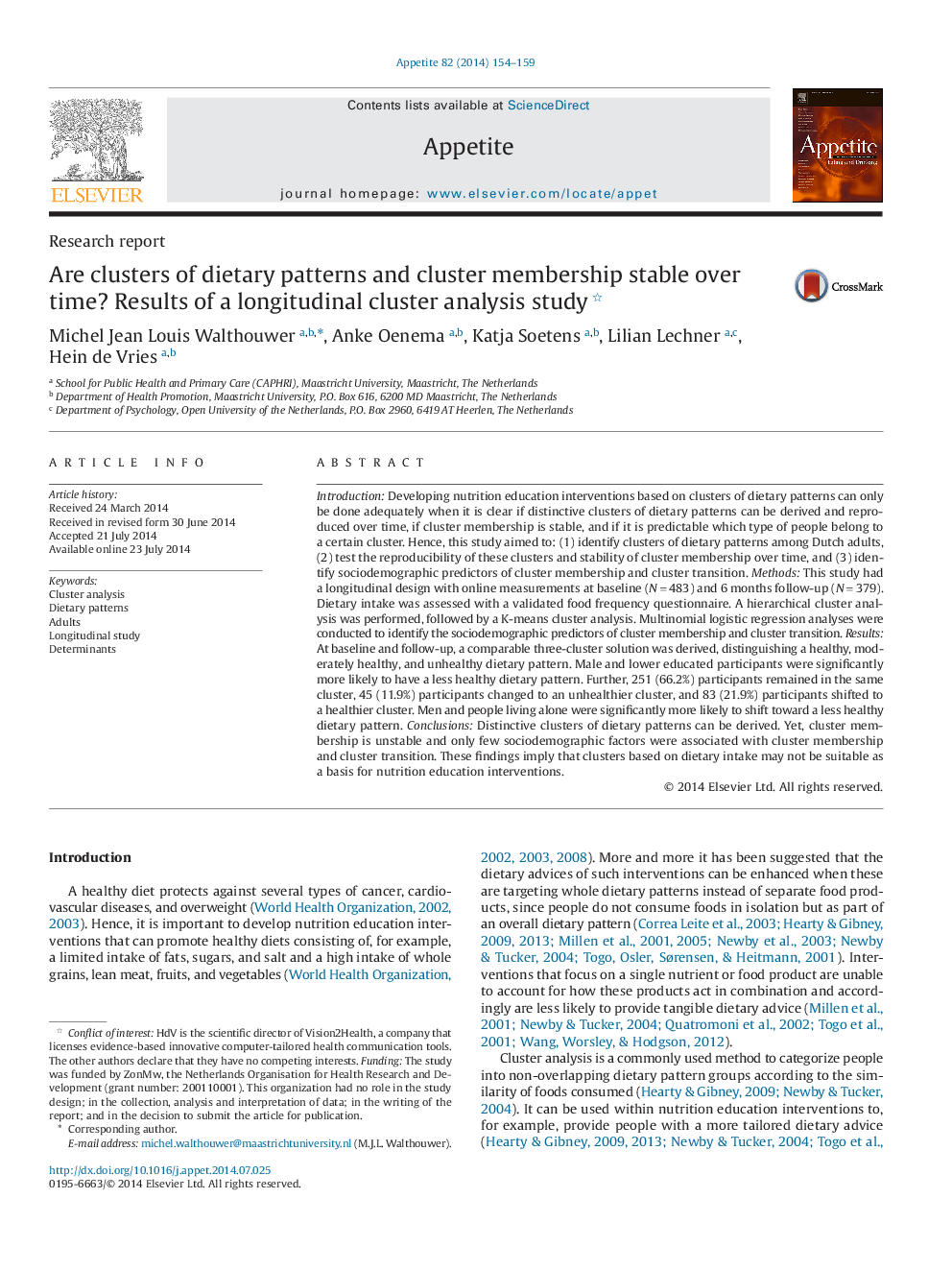| کد مقاله | کد نشریه | سال انتشار | مقاله انگلیسی | نسخه تمام متن |
|---|---|---|---|---|
| 939477 | 1475398 | 2014 | 6 صفحه PDF | دانلود رایگان |
• Distinctive clusters of dietary patterns were derived and reproduced over time.
• One third of the participants changed from cluster of dietary pattern over time.
• Only few sociodemographic factors predicted cluster membership.
• Developing interventions based on clusters of dietary patterns may not be efficient.
Introduction: Developing nutrition education interventions based on clusters of dietary patterns can only be done adequately when it is clear if distinctive clusters of dietary patterns can be derived and reproduced over time, if cluster membership is stable, and if it is predictable which type of people belong to a certain cluster. Hence, this study aimed to: (1) identify clusters of dietary patterns among Dutch adults, (2) test the reproducibility of these clusters and stability of cluster membership over time, and (3) identify sociodemographic predictors of cluster membership and cluster transition. Methods: This study had a longitudinal design with online measurements at baseline (N = 483) and 6 months follow-up (N = 379). Dietary intake was assessed with a validated food frequency questionnaire. A hierarchical cluster analysis was performed, followed by a K-means cluster analysis. Multinomial logistic regression analyses were conducted to identify the sociodemographic predictors of cluster membership and cluster transition. Results: At baseline and follow-up, a comparable three-cluster solution was derived, distinguishing a healthy, moderately healthy, and unhealthy dietary pattern. Male and lower educated participants were significantly more likely to have a less healthy dietary pattern. Further, 251 (66.2%) participants remained in the same cluster, 45 (11.9%) participants changed to an unhealthier cluster, and 83 (21.9%) participants shifted to a healthier cluster. Men and people living alone were significantly more likely to shift toward a less healthy dietary pattern. Conclusions: Distinctive clusters of dietary patterns can be derived. Yet, cluster membership is unstable and only few sociodemographic factors were associated with cluster membership and cluster transition. These findings imply that clusters based on dietary intake may not be suitable as a basis for nutrition education interventions.
Journal: Appetite - Volume 82, 1 November 2014, Pages 154–159
